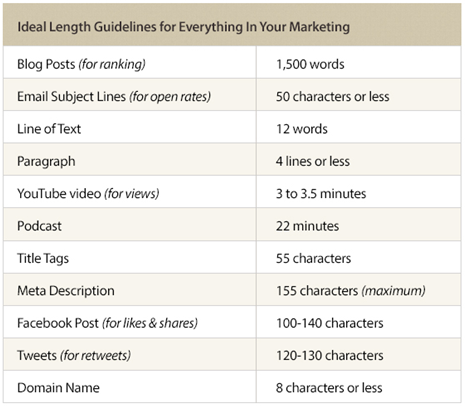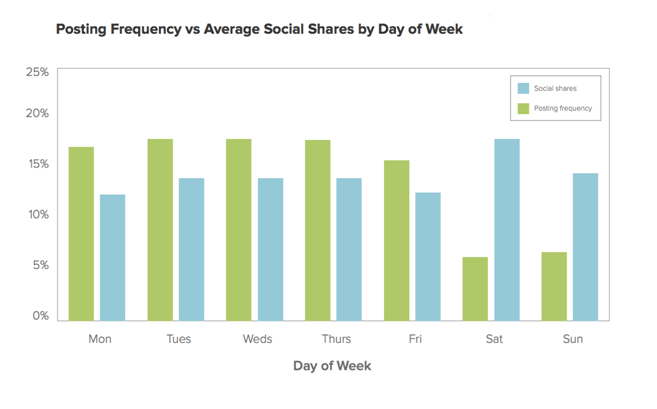Blog writing is a crucial aspect for any effective search engine marketing optimization campaign. Not only does blog writing create new web pages for Google’s bots to crawl (and, in doing so, send updated information back to Google), it also expands a website’s authority in the eyes of search engines and encourages users to visit a site and stay longer (which increases click-through rates and decreases bounce rates). Furthermore, the internal linking structure used in blog posts (you are using internal links, aren’t you?) helps boost the importance of key landing pages on the website.
All these positive outcomes of blogging can be undone, however, if a website’s blogs are not properly optimized. To help make sure your blog posts are pulling their weight in your company’s SEO strategy, Alecan Internet Marketing has put together an exhaustive list of blog writing tips, do’s and don’ts, and everything in between. Read on for great insider advice, or contact Alecan today to learn about how a business blog can help boost your search engine rankings.
Feeling a little lost? Review our comprehensive glossary of terms now.
Choosing A Great Topic
Choosing an appropriate SEO blog topic can be challenging, especially if you’re not familiar with the industry, service, or topic chosen by the marketing coordinator. First, try putting yourself in the shoes of the target audience. Ask yourself what types of things the blog’s established audience would like to read about, and what topics could bring in new readers. If you’re still having difficulty nailing down a topic, try incorporating one or more of the following into your brainstorming sessions:
Answer A Question
Do you have a question about a company’s service, product, history, or process that you think readers would like to know the answer to? Articles that answer questions are some of the most widely-shared posts on the Internet, and will also help establish your brand as a trusted authority within a specific industry or niche. If your not sure what types of questions your audience is asking, try searching for a topic on Google’s Quora.com.
Trending Topics
Writing a post on a trending topic is a great way to get readers to share your article, and also sends search engines like Google a strong signal that your company or brand is creating relevant, informative content. If you’re not sure what topic are trending, try Facebook and Twitter. Both of these platforms now include a “trends” or “trending” section that includes a short list of the day’s most popular stories, articles, and news.
How-To’s And Listicals
Today, more people are going on the Internet to learn how to perform tasks—changing the oil in their car, using a piece of software, baking chocolate chip cookies, etc.—more than ever before. As a content creator, your website can’t afford to miss out on a piece of this pie. And while listicals usually don’t ascribe to the “how-to” format, they are widely-shared and relatively easy to create.
Spy On Your Competition
Though this tactic is a bit underhanded, looking at a competitor’s blog articles might help generate new ideas and let you see an industry blog from a reader’s perspective. If you happen to see a great article topic, don’t steal it outright. Instead, think of how you can approach the topic from an original angle or put a unique spin on it.
Determining The Best Length
Google hasn’t released a definitive guide to how long a “quality” blog post should be (no surprises there), but in general, any article under 400-500 words runs the risk of being considered “thin content” and could actually hurt your SEO strategy in the long run. (The obvious exception to this are Buzzfeed-style listicals, which typically don’t surpass 200 words.) From a content standpoint, any article that covers the topic well and provides trustworthy information should be well-received by search engine algorithms. From a user’s perspective, however, longer blog posts tend to be ranked higher, generate more traffic, and are more widely shared.

Read More About Why Users And Robots Love Long-Form Content.
Using Your Keywords
Assuming that you already have a target keyword or keyword phrase in mind—performing keyword research is an article for another time—it’s best to include your keyword in the meta title, meta description, in your article’s <H1> (typically the title of your post), in the first sentence or two of your first paragraph, in the last paragraph of your article, and throughout your post when applicable. “Keyword stuffing”, or deliberately overusing keywords, however, may land your article in Google’s sin-bin, so try to keep your keyword density (how many times the keyword appears ÷ the total number of words in the article) to around 2%. Finally, never compromise content in the interest of squeezing in a keyword. If the keyword doesn’t make sense in a particular place, better to go without than create user-unfriendly content.
Adding Internal Links
Just as they do on a website’s static pages, internal links in the text of a blog article helps create an intricate, intuitive linking structure for both users and search engine robots to follow and sends an SEO boost rippling throughout the website when each blog post is visited. As a general rule of thumb, blog posts should contain at least one hyperlink to another page on the site—either to another blog post, a static page, or, whenever possible, to one of your website’s all-important landing pages—and each hyperlink’s text should be as relevant to the linked content as possible. Sending a hyperlink with the phrase “best Internet marketing company in Los Angeles” to a post about donuts, for example, will hurt your SEO efforts more than helping them.
Employing <H Tags> In Posts
Similar to titles, headings, and subheadings in an article or paper, <H Tags> help both readers and robots to know what each blog post is about and increases the article’s “scan-ability” (which most users prefer over large blocks of uninterrupted text). Typically, an article’s title will be set as the default <H1> tag, and subheading may be turned into <H2> and <H3> tags by highlighting the blog post text and selecting the appropriate heading type (i.e., Heading 1, Heading 2, Heading 3, etc.) from the drop-down menu at the top of each post’s visual editor. It’s important to note, too, that different <H Tags> use different fonts, sizes, and colors, depending on the theme. You may want to see what headings look like. You can do this by clicking “view post” in the editor menu on the page before publishing a blog post.
Penning Click-Worthy Meta Titles And Descriptions
Because there are literally millions of headlines on the Internet and each one is screaming for the attention of readers (who may, in turn, become subscribers, followers, customers, or clients), many blog writers believe that crafting an attention-grabbing, click-getting headline is the most important aspect of the blog writing process. Copyblogger, a popular content website, estimates that only 80% of people will actually read an article’s headline, and only 2 in 10 users will actually click through to the article.
Asking questions (“Do You Know How to Create the Perfect Blog Post?”), offering how-to’s (“How to Create a Perfect Blog Post”), and using numbers (“10 Tips For Creating Great Blog Articles”) in your meta title are all great ways to inspire readers to learn more about your topic. If you’re having trouble penning an effective title, “Numbers + Adjective + Target Keyword + Rationale + Promise” is a good formula to follow. (Example: “10 Simple Things You Can Do Today That Will Make You Happier”.)
Blog Article Meta Titles Should:
- Be less than 55 characters length
- Contain target keywords (if possible)
- Grab the reader’s attention
- Present the most important words first or last
Blog Article Meta Descriptions Should:
- Be less than 155 characters in length
- Contain target keywords at the beginning of the description
- Create further intrigue or interest in the article
- Include a Call To Action when appropriate
Blog Article URLs Should:
- Be short, easy-to-read, and searchable (Google recommends 3-5 words)
- Contain target keywords (if possible)
- Eschew small words like “a” and “the”
- Be descriptive enough to let a user know what to expect
Incorporating Eye-Catching Images/Photos
Writers may cringe, but one great photo, image, or graphic is as important to an article’s “success” as 2,000 words of well-researched, expertly-written copy. In fact, a 2,000 word article should contain about six images, or one for every 350 words of text. Some other important things to remember about blog post images:
Be Wary of Copyrights
Performing a Google Image search may return the perfect photo to use in your article, but unless the search is filtered using the Search Tools → Usage Rights → Labeled For Reuse advanced search option, a blog writer can never be sure if the image has been copyrighted. (Tip: Most images of celebrities are copyrighted, usually by the Associated Press or Getty Images). To avoid fines or legal action when choosing an image for your blog articles, best to legally purchase the rights to the photo through a distribution company like Getty Images, BigStock,com, or Shutterstock.com, or search Flickr.com for free, non-copyright images posted by the site’s users.
Include Alt Image Tags
Alt Tags, manifested as the text that appears when you hover over an image, may seem insignificant, but they are actually an important part of a collaborative, integrated SEO strategy. Because Google can’t actually see a blog post’s images (yet!), including alt-tags helps search engines know more about each picture and rank the page it appears on accordingly.
Mind The Image Size
The larger the image (either in actual size or resolution), the longer it takes for the website to retrieve that image from the server. Because “page load speed” is now part of Google’s mysterious ranking algorithm, peppering posts with jumbo pictures will likely counteract any positive SEO effects an article might have earned, regardless of how good the article may be. To keep large images from clogging up all your bandwidth, choose photos that are less than 1000 x 1000 pixels.
Increasing A Post’s Share-ability
If getting a post to go viral is the ultimate goal for content creators—and who wouldn’t want their article to be read by millions?—making each article as shareable as possible is a must. Adding tweet-worthy quotes and social sharing buttons on every post is a simple way to increase an article’s likelihood of being passed on or posted on another person or business’s social media page.
Paying Attention To Post Time
Track Maven, a digital marketing analysis firm, looked at over 4,600 blogs and 1.2 million blog posts to determine the best time to publish blog articles. Their findings? Blogs received more social shares (despite less posting frequency) on the weekends, while weekday blogs performed best when posted early in the morning and late at night, but not so well when posted throughout the workday.
 For more insider tips on how to optimize your business’s blog or how Alecan’s Digital Marketing services can help supercharge your business with content creation (including blogging), PPC Advertising, and social media marketing, contact Alecan today!
For more insider tips on how to optimize your business’s blog or how Alecan’s Digital Marketing services can help supercharge your business with content creation (including blogging), PPC Advertising, and social media marketing, contact Alecan today!


